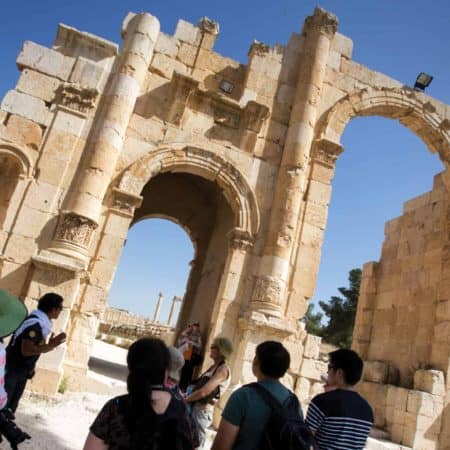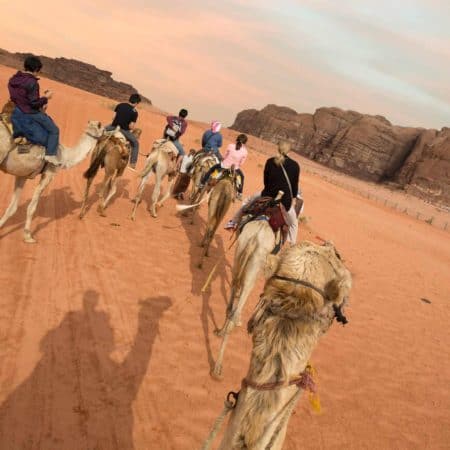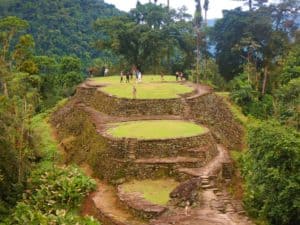With its desert stars, rugged canyons and the glittering showpieces of Petra and the Dead Sea, this middle eastern jewel wedged in between some of the world’s most war-torn nations offers a haven of peace and tranquillity. Seamlessly bridging the gap between ancient and modern, traditional and cosmopolitan, Jordan is brimming with enough history, culture, luxury and adventure, to sate the wish list of every traveller.
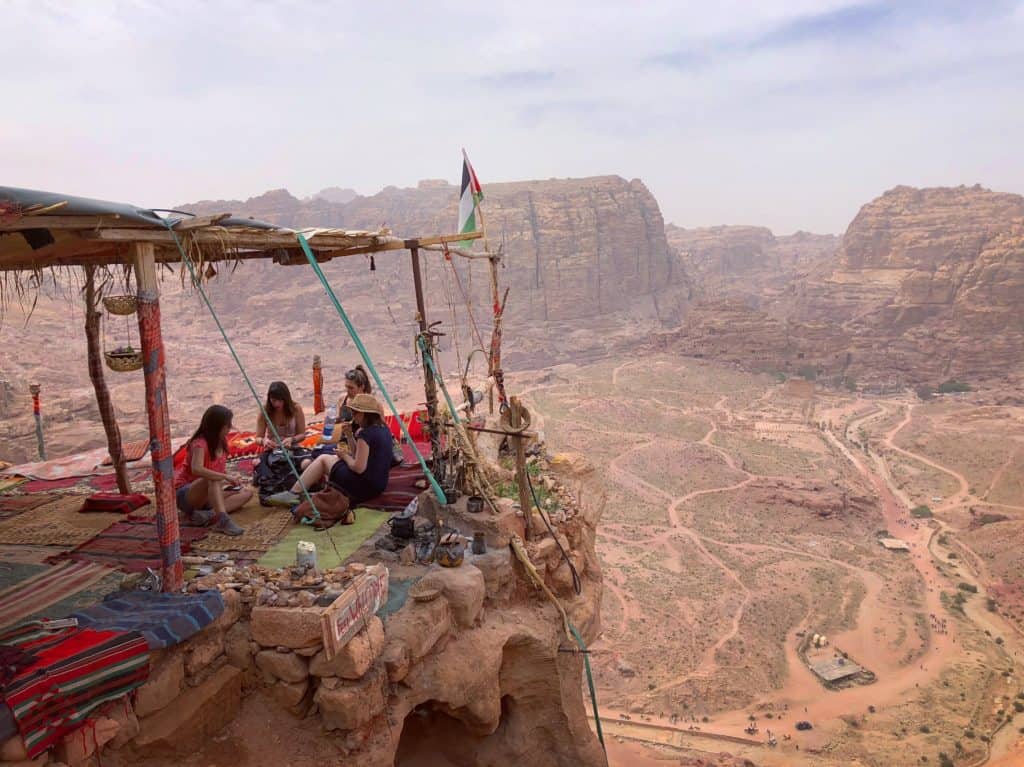
Welcome – Ahlan wa Sahlan
According to pretty much every Jordanian you speak to, this small country, a third of the size of the UK, is considered the cradle of civilisation. While it is the lure of desert sand, salty sea and striking ruins that first attracts visitors, it is the conviviality of the locals that act as a lasting memory. Hospitality lies at the heart of Jordanian culture. Never has the old adage, ‘my house is your house’, been more fitting than here in the Hashemite Kingdom.
Amman
Most visitors to Jordan arrive by way of Queen Alia International Airport in the capital, Amman. This bustling, state of the art city, stylish and multicultural, with boutique shops and cutting-edge art galleries is actually one of the oldest metropolis’s in the world dating back to the 13th Century BC. For instant immersion, make your way downtown to Rainbow Street and treat yourself to a helping of the nationally treasured lamb dish, Mansar, or to Al Balad for a touch of retail therapy. To get your city bearings, walk up hill to the ancient Citadel. For maximum authenticity, make sure that this coincides with the Muezzin call to sunset prayer.
Jerash
For most visitors to Jordan, Amman is simply the springboard from which to visit the rest of the country. Based on its proximity to the capital, a popular day trip is 36km north to the roman ruins of Jerash. If it were not for Petra, Jerash would come top of the list for visitors to Jordan, for its highly impressive selection of preserved Roman baths, hippodrome, temples and archway. Try and catch a daily (bar Tuesday) Roman re-enactment where you get to ride chariots, chew the cud with centurions and partake in Roman war games.
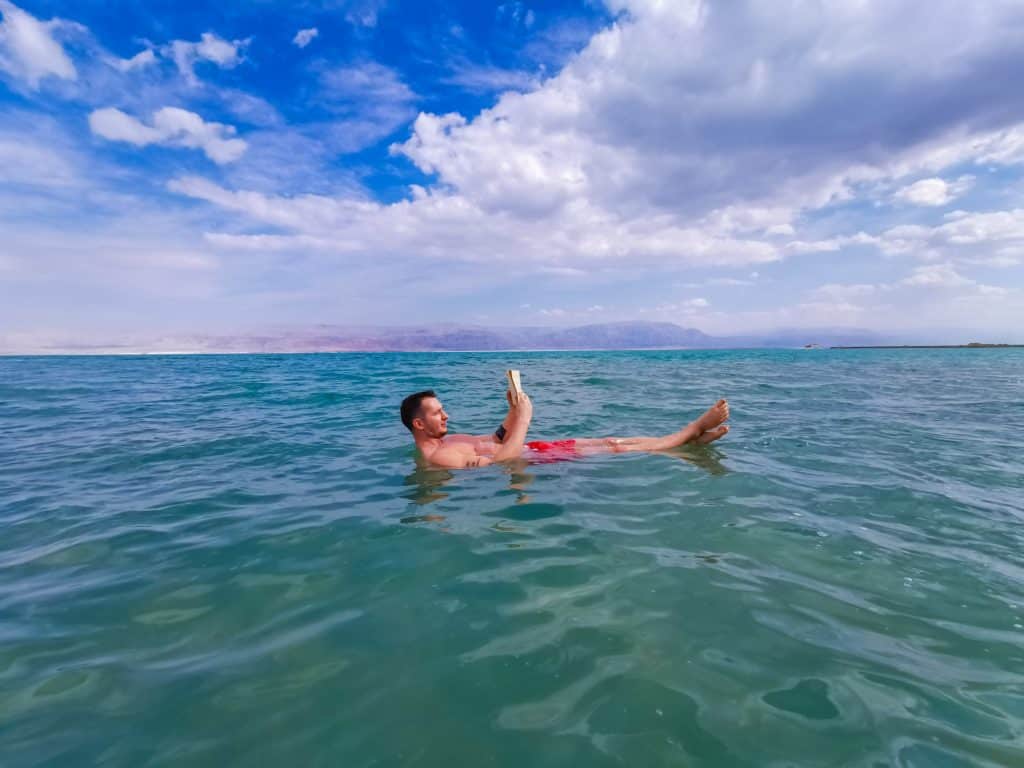
Float on the Dead Sea
Heading 60km south of Amman, you arrive at the lowest point on earth or as it is commonly known, The Dead Sea. Situated 410 metres below sea level in the Wadi Mujib Gorge, it is also known as Salt Sea due to its 33.7% salinity around 9.6 times saltier than the ocean. The best way to enjoy the Dead Sea is to bathe in it and while you’re at it, take a book to read as the consistency of the salt provides natural buoyancy.
If you fancy getting high at the lowest point on earth, the Royal Aero Sports Club of Jordan, offer gyrocopter and sky diving opportunities. No experience necessary.
Wadi Mujib Nature Reserve
Wash the salt away in the waterfalls gushing out of the surrounding cliffs of the Wadi Mujib nature reserve that soar 900 metres above sea level. This dramatic terrain offers excellent canyoning opportunities; sliding on rocks, wading up the Wadi Mujib and abseiling off the peaks of waterfalls.
Dana Reserve and the Jordan Trail
One of Jordan’s most appealing features is its small size enabling you to pack a lot into a short time. One of the best ways of getting to know the country intimately is by hiking all or part of the 650km Jordan Trail, which comprises woods, deserts, villages and wadis, that connect Um Qais on the Israeli border in the north with the turquoise sea of Aqaba in the south. Voted one of the world’s best hikes by the National Geographic is the five-day stretch of Jordan Trail through the Dana Biosphere Reserve to Petra (see below) along the face of the Great Rift Valley.

Lost City of Petra
The number one port of call for most visitors to Jordan is the UNESCO preserved pink sandstone city of Petra. With its palaces, caves and 800 tombs dating back to 300BC, this ‘rose red city half as old as time’, is one of the seven new wonders of the world. Located 240km south of Amman and stretching over 264 square kilometres, Petra served as the foremost city of the industrious Nabateans, a nomadic Arab tribe who grew Petra, or Raqmu as they knew it, into the hub of the spice trade. Abandoned in the 12th Century, Petra was rediscovered in 1812 by a Swiss explorer and since then referred to as the Lost City of Petra. No amount of words can describe the sheer exhilaration of emerging for the first time, from the narrow Siq Canyon corridor and catching a glimpse of the Treasury, Petra’s most iconic façade cut into the rock and stretching 40 metres high.
For a magical experience, book a hotel in the surrounding town of Wadi Musa and visit the ancient city by night, when it is lit only by the moon and candlelight.
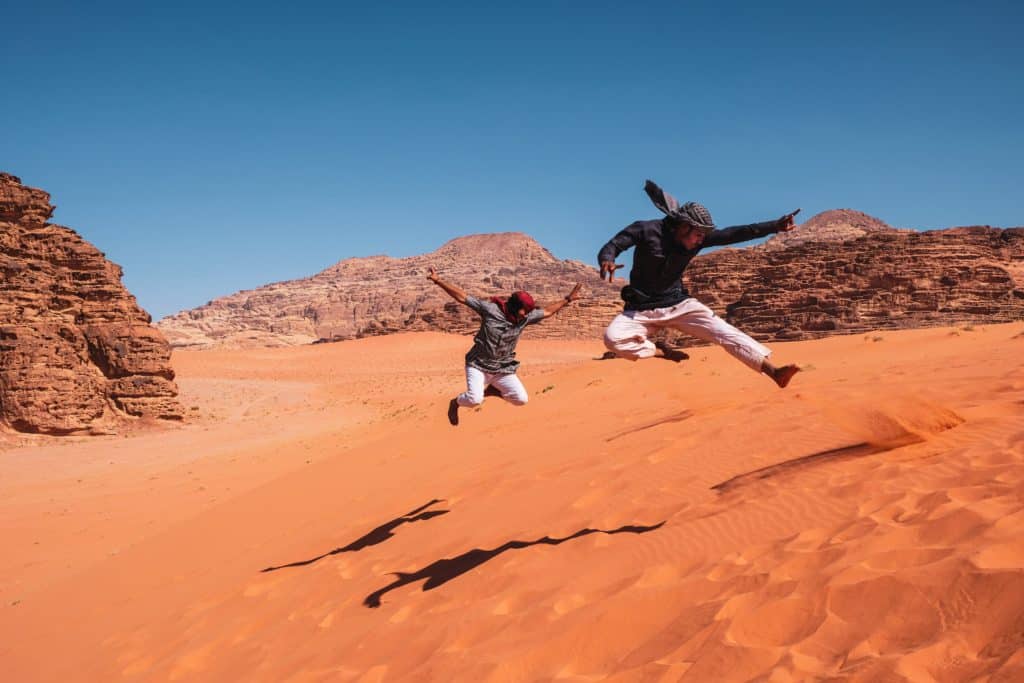
Wadi Rum
No trip to Jordan is complete without total desert immersion and the 300 square miles of Wadi Rum with its sand dunes, mountain climbs and ancient Bedouin tribes is only too happy to oblige. You might recognise the desert from its starring role in Rogue One: A Star Wars Story. Don’t skimp on time here because an overnighter in a Bedouin camp, under the desert stars is an essential. Expect a full quota of exceptional Bedouin hospitality in the form of camel ride, dinner and music and if possible, round the night off with a balloon ride at dawn. Hiking is highly recommended but make sure you have a Bedouin guide as it is easy to get lost. If you fancy shimmying up a mountain, Wadi Rum is home to Jabal Umm ad Dami, Jordan’s highest peak, 1,854 metres above sea level offering spectacular views over the Red Sea and Saudi Arabia.
Dive into Aqaba
If views of the Red Sea from atop a mountain peak put you in the mood for a dip, head 77km west to Aqaba. A small stretch of coastline but with its crystal waters, vivid coral reefs and deep canyons spread over thirty dive sites, this stretch of Red Sea is a divers’ paradise. Diving instructors and PADI courses are widely available. If already qualified, dive deep and explore the Cedar Pride, a 74 metre cargo vessel sunk in 1985, and now considered the most famous dive site in Jordan.
Know Before You Go
- The best time to visit Jordan is in the spring; March – May before the long, scorching summer months sneak in.
- The most economical way to ‘do Jordan’ is to buy the Jordan Pass which entitles travelers to prepaid (and considerably cheaper) entry to over 40 attractions. Purchase before arriving in Jordan and the entry visa fees will be waived so long as your trip includes three nights or more.
- considered disrespectful in Jordanian culture to turn down an offer of food, so even if you are bursting at the seams, smile and graciously accept whatever comes your way.
- Compare
- Sale!
- Egypt & Jordan Adventure
-
£1,849.00£1,572.00 - View Trip
- Compare


- Explore Israel & Jordan
- £3,049.00
- View Trip
- Compare
- Explore Jordan
- £1,349.00
- View Trip
- Compare
- Sale!
- Highlights of Jordan
-
£879.00£747.00 - View Trip


